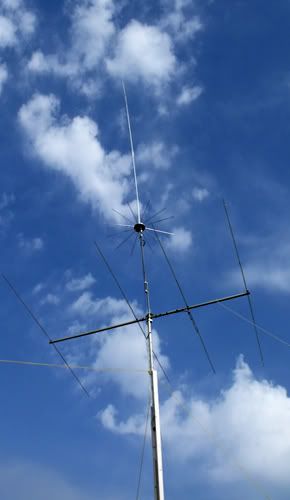B
BOOTY MONSTER
Guest
I must have missed the point you were making when you posted about the Maco GPK, or I didn't see it at all.
If the radials, in this case work like you suggest, then your comments about Solarcon makes good sense. I can't remember what-does-what with radials on the Imax, but I do know for sure radials work well to raise and improve the look of the match with a 1/4 wave radiator.
just to clarify ..... he didn't use the boomer gpk , he said he used ground elements from a maco 58 . the 58 has 104 inch ground elements . the boomer gpk has 84 inch elements using maco's assembly guidelines . they're 12 inches longer than the 72's from solarcon and horizontal like the 58 rather than sloped .
Maco Assembly Instructions
just being picky/clarifying .


